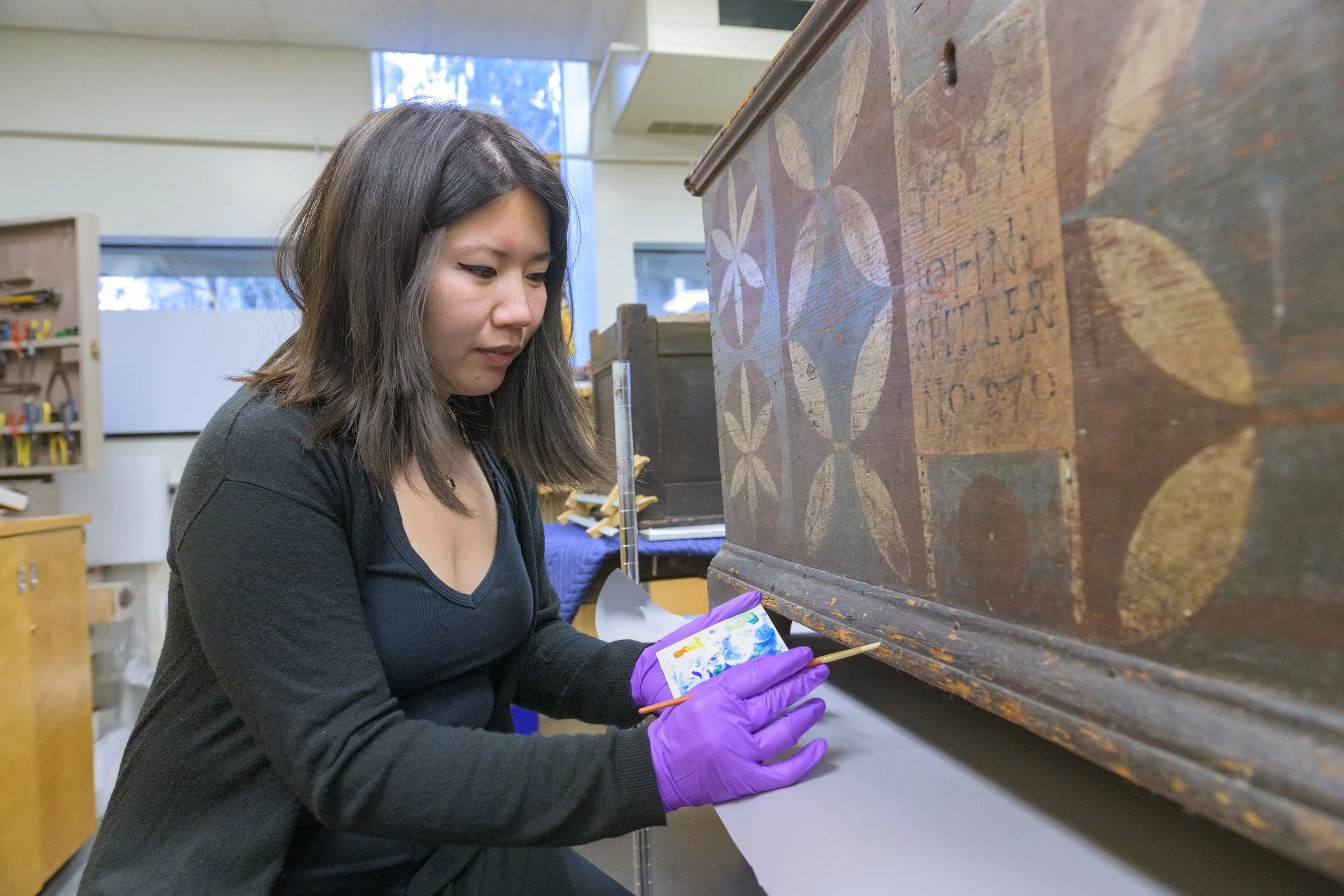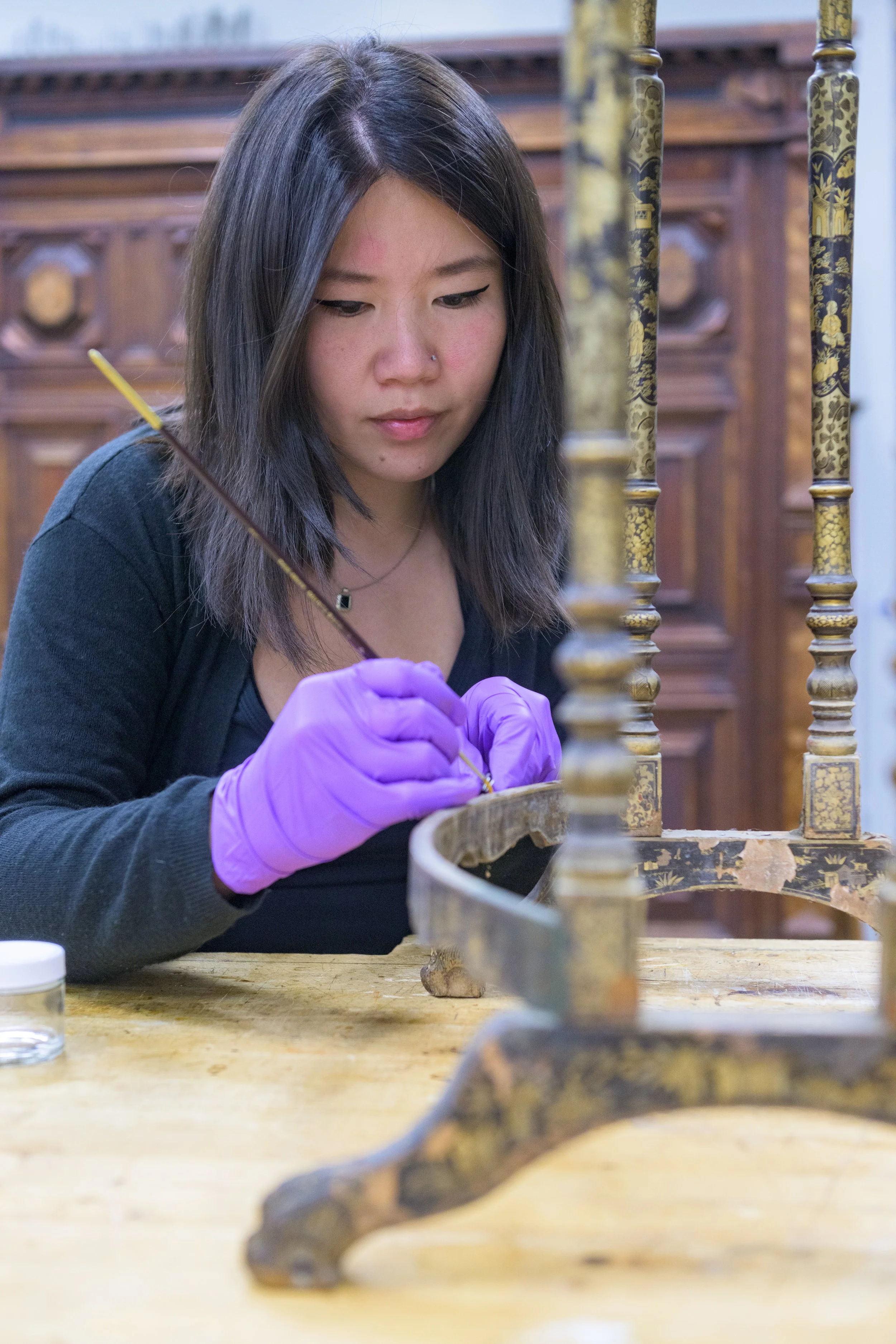About Me
Caroline Shaver earned an M.S. from the Winterthur/University of Delaware Program in Art Conservation and a B.A. from the University of Michigan. She specializes in the conservation of wooden objects and has a particular interest in decorative surfaces such as gilding, polychrome, lacquer, and historic finishes. Over her 9 year career, Caroline has had the opportunity to work with encyclopedic collections and historic homes in the United States, the United Kingdom, and Italy. She is an active member of the American Institute of Conservation (AIC) and holds leadership positions within the organization.
heartwoodartcons@gmail.com
Positions held in conservation labs
The National Trust - Kent, UK
The Cleveland Museum of Art - Cleveland, OH
The Philadelphia Museum of Art - Philadelphia, PA
Winterthur Museum, Garden, & Library - Wilmington, DE
The Colonial Williamsburg Foundation - Williamsburg, VA
The Saint Louis Museum of Art - Saint Louis, MO
The Cincinnati Art Museum - Cincinnati, OH
FAQs
-
Conservation is the profession devoted to preserving cultural objects for the future, including items with artistic, historic, and personal value. Because of the technical nature of modern conservation, conservators specialize in a particular type of object, such as paintings, works on paper, photographs, textiles, sculpture, furniture, books, and other three dimensional objects.
Activities performed by a conservator include examination, scientific analysis, and research to determine the original materials used in an object and the extent of loss and damage. Conservation often includes hands-on treatment steps performed on the object to slow future deterioration. Other conservation activities routinely performed by the conservators at our studio include collection surveys, emergency preparedness, disaster recovery, detailed documentation and condition reporting, and construction of archival housings and storage enclosures.
-
I assess each object or collection individually, and work with the client to tailor a unique conservation treatment plan with associated costs. This will vary depending on the condition, size, object type, materials, and the intended use after conservation treatment.
Conservation treatment plans rarely cost less than $500. A conservator must examine and test each object in person before we can commit to a treatment plan and cost. I charge a minimum deposit for a condition report and treatment proposal, which will go towards the cost of the treatment if we proceed.
-
I am happy to discuss your project over the phone and can provide you with an initial assessment and a predicted treatment plan for your object(s) over email. It is especially helpful to send photographs of the front and back of the object, along with approximate dimensions, a brief description of the object’s condition, and your goals for conservation treatment by email.
-
Yes! I can visit you on-site for a collections survey and/or evaluation of items to be treated. This could be a multi-day site visit to a cultural institution to perform a grant-funded collections assessment or a visit to a private client to assess a family collection of furniture or other objects.
I also conserve architectural woodwork, which likely involves work on-site. Please contact me to schedule a date for me to visit your collection or site.

